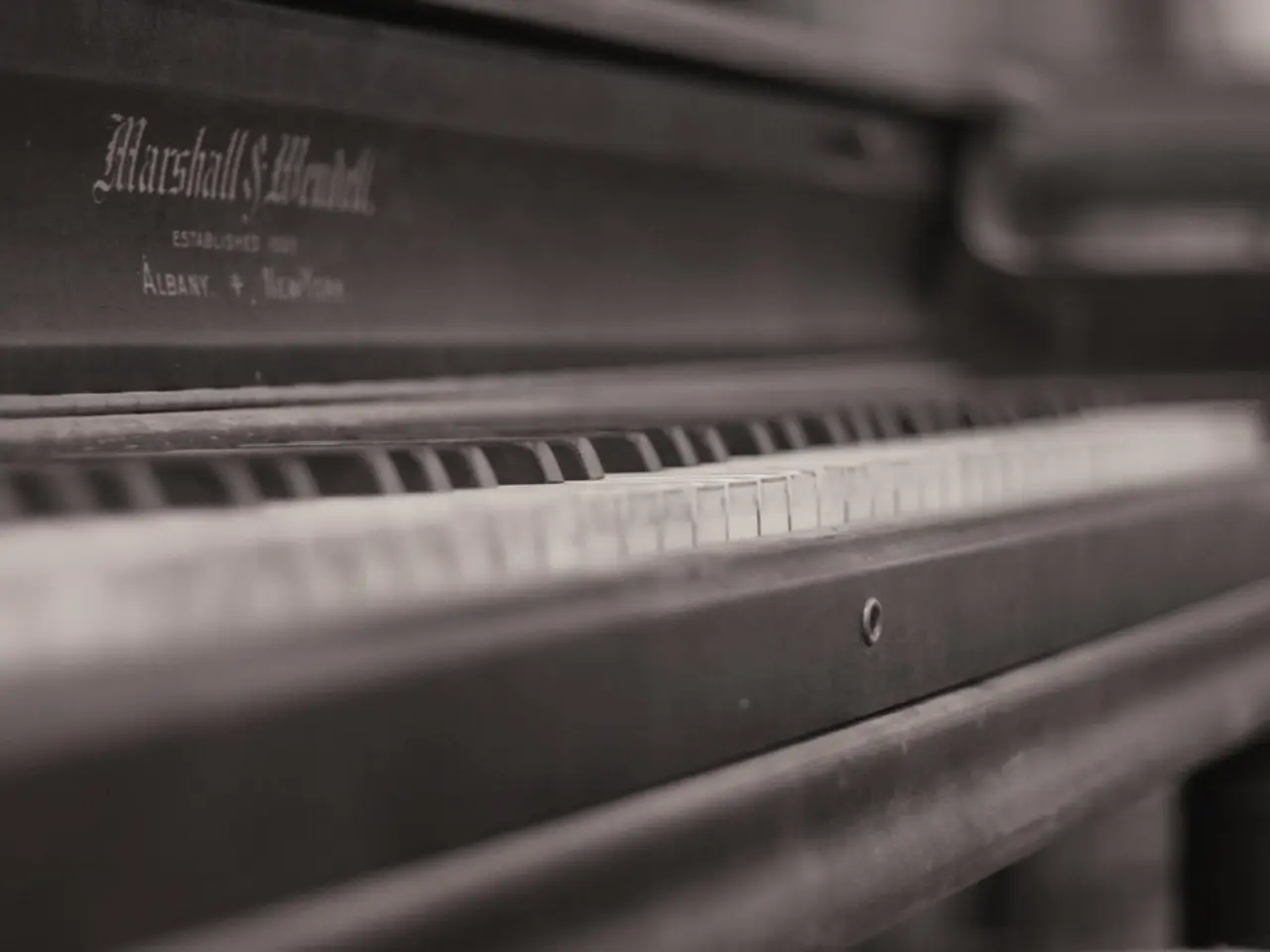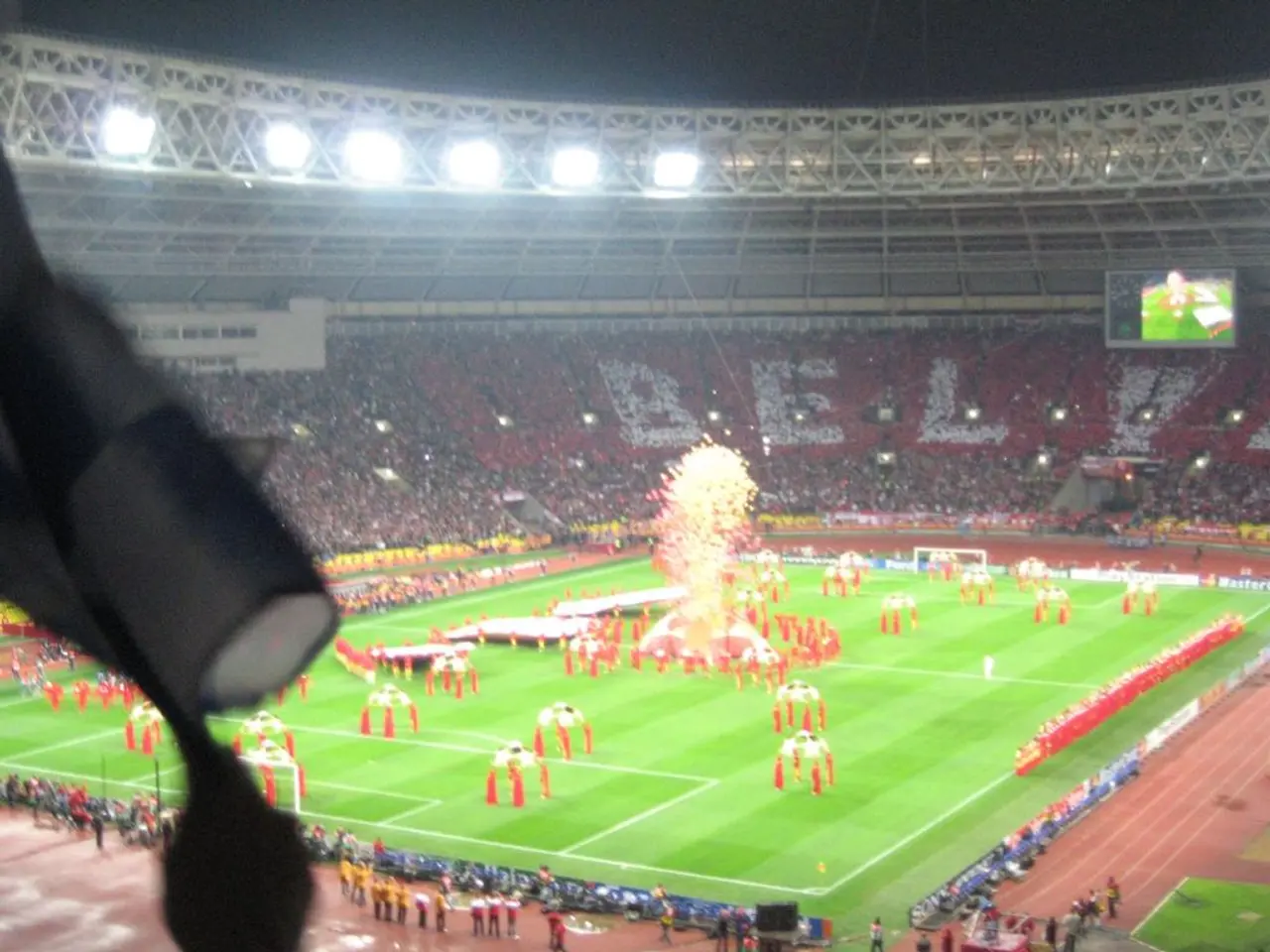Exploration of the Initial Movement in Haydn's Sonata in E Flat Major, HOB XVI 49
Haydn's Piano Sonata in E-flat Major: A Masterpiece of the Classical Era
Haydn's Piano Sonata in E-flat Major, Hob. XVI:49, is a significant work from the Classical period, composed around 1789-1790. This masterpiece, penned during Haydn's prolific years at the Esterházy court, showcases the composer's advanced sonata writing style.
The sonata's musical structure is a testament to Haydn's mastery of the Classical sonata form. The first movement, marked "Allegro", and the second movement, "Adagio e cantabile", follow the traditional sonata-allegro form. The exposition, in particular, is expanded with a compound sentence structure, enlarging the conventional eight-bar sentence form.
The main theme is re-stated exactly as in the exposition during the re-elaboration. The first subordinate theme in the re-elaboration is in the home key, providing a calmer feeling. An interpolation leads briefly to F minor through a deceptive cadence before arriving at the Coda.
The development section starts with material from the closing section, now in C minor, as a smooth continuation from the end of the exposition. The development fragmentation occurs in bar 96, with a model in D flat major, and continues with further fragmentation in bar 104. The core of the development establishes a relatively large-sized model, sequenced one or more times, providing a sense of instability, restlessness, and dramatic conflict.
The second movement, regarded as one of the sonata's finest features, is noted for its operatic quality and emotional depth. The sonata's E-flat major key lends a warm, noble character, often associated in Haydn's period with a heroic or majestic mood that composers exploited for expressive contrasts in musical form.
The sonata was dedicated to Princess Maria Anna von Hohenlohe-Schillingsfürst, a highly regarded noblewoman and accomplished musician. It is included in the ATCL repertoire list (no. 117) and the Associate Diploma (ARCT) in Piano, Performer (Page 101). The analysis of this sonata is useful for performers studying under the Trinity or ABRSM syllabus, composers interested in exploring the Allegro di Sonata form, and anyone who would like to dive into this piece.
The sonata was composed for a fortepiano, and Haydn provides instructions for playing this piece, recommending the Adagio movement in particular. The sonata reflects several characteristics of the Classical period, including form, expressiveness, and technical brilliance. As Haydn's musical style had reached full maturity, this sonata demonstrates greater complexity, emotional depth, and structural innovation compared to his earlier compositions.
The sonata's composition coincides with a time when Haydn's international reputation was growing. This work, along with others from this period, helped cement the piano sonata as a key solo genre in the Classical era. Its elegance, wit, and structural clarity influenced later Classical keyboard sonatas, including those by Mozart and Beethoven. Haydn's Piano Sonata in E-flat Major remains an exemplar of Haydn's mature sonata craftsmanship and his influence on the trajectory of Classical period instrumental music.
[1] Sadie, S., & Tyrrell, J. (Eds.). (2001). The New Grove Dictionary of Music and Musicians. London: Macmillan Publishers Ltd.
The sonata's advanced sonata writing style, penned by Haydn, offers performers a study in the Allegro di Sonata form, showcasing the technique of expanding the conventional eight-bar sentence structure. This masterpiece, dedicated to Princess Maria Anna von Hohenlohe-Schillingsfürst, also serves as an entertainment piece with an operatic quality and emotional depth, demonstrating the composer's creativity in music composition.







